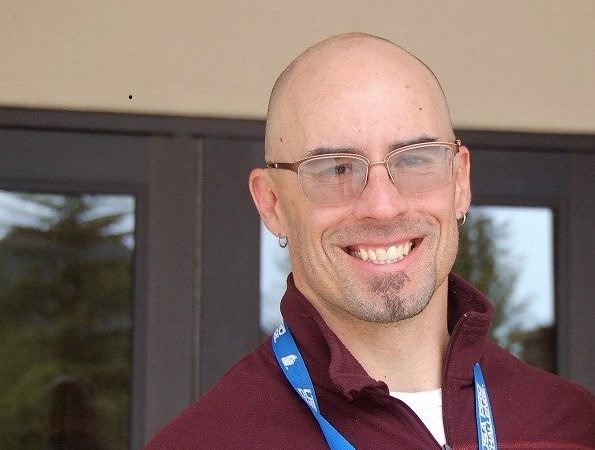by Lana Isaacson, LCSW, CAC III, Certificate in Marriage and Family Therapy, PACT Level I
Codependency is one of the most confused and contested words in the couples therapy field today. There could even be a debate between couples therapists and addiction counselors on whether or not codependency (and even the cartoon above!) is healthy or unhealthy.
Addiction counselors would likely say that codependency originates in childhood and manifests as an unhealthy relationship with oneself and a dysfunctional interpersonal pattern in adulthood between the codependent and his/her partner, children, and others that involves controlling, excessive caretaking, and enmeshment. Codependency and enabling are often used synonymously to refer to the dynamic between a partner with an addiction and the codependent who “loves him/her to death” through enabling. Addiction counselors might also contend that any level of dependency or too much “connection” to one’s intimate partner is unhealthy and recommend that individuals in recovery wait at least one year before beginning an intimate relationship.
On the other hand, couples therapists are more likely to conclude that codependency stems from the couples’ current dynamic, which includes one partner displaying an avoidant attachment style, which influences the other partner to feel tremendous anxiety and want to cling to her/his partner, and appear as codependent. These therapists might also underscore how partner’s emotional dependence on one another is a normal human need, and therefore should not be shamed. Or, couples therapists might elevate a codependent relationship as the ideal because they attest that partners are more resilient when they have a “secure base” or emotional anchor and will possibly point to the 2006 MRI study by Dr. James Coan that demonstrated how partners can regulate each other’s psychological and emotional well-being. Finally, some couples therapists, especially those who subscribe to attachment theory, might deny that codependency exists as in Amir Levine, MD and Rachel Heller’s well-respected book, Attached, in which they assert that “codependency is a myth”.
As with couples in therapy, often the truth lies somewhere in the middle. Because I am both an addictions counselor and couples and family therapist, it seems to me that this argument is a semantic one and that codependency means very different things to both professionals. In order to best serve our clients, it is important to distinguish the difference between codependency and interdependency or a secure attachment.
First, what is codependency?
This answer can greatly differ based on the source. I will share a definition by marriage and family therapist, Beverly Berg, PhD who wrote Loving someone in recovery; The answers you need when your partner is recovering from addiction.
“Codependency is an emotional and psychological state in which one is excessively preoccupied with taking care of or controlling another person at the expense of one’s own needs… The codependent’s excessive focus on caretaking does not only occur with his or her primary partner; it can also apply to work relationships, friendships, and relationships with extended family. People with codependency have a hard time leaving relationships that are abusive or depriving, tend to stay in jobs that are stressful, and are prone to ignoring their medical needs. Because of their high tolerance for denying their own needs, codependents tend to wait until they have experienced serious consequences before seeking a path of recovery” (2014).
Internally, codependents tend to struggle with thoughts of not feeling good enough, excessive worry about what other people think of them, and constant waiting for disaster or the other shoe to drop. They may perceive neutral or even positive situations as negative. I know some very “high functioning” codependent people who (similar to some addicts prior to recovery) may look great on the outside, but are internally suffering. Fortunately, treatment/help for codependency addresses both one’s internal and external world.
Lastly, codependency affects people from all walks of life- both men and women, addicts and non-addicts, and should not be assigned to every partner of an addict. To see if you or someone else meets the criteria for codependency, one assessment can be found on The Bridge to Recovery’s website (an outstanding treatment program for codependency)
Second, how does codependency develop & manifest in adult relationships?
Stan Tatkin, PsyD, creator of PACT (Psychobiological Approach to Couples Therapy), which incorporates attachment theory, neuroscience/arousal regulation, and experiential therapy, explains the origins of codependency in the foreword for Berg’s book. Tatkin’s former supervisor was John Bradshaw (the latter was a leader in the addiction and codependency treatment field).
“[…] Codependent men and women tend to bond in love relationships in a way that makes them both angry and resistant…because during their childhood, at least one of their important caregivers was preoccupied as a result of feeling overwhelmed, unsupported, and unloved by his or her own parents” [or spouse]. Preoccupied caregivers tend to alternately reward their children for depending on and supporting them, and rejecting, punishing, or abandoning them. This inconsistency tends to make the children angry as well as suspicious of and resistant to affectionate approaches from the caregiver [and later spouse] (2014)”.
“[…] Fast forward to adult relationships with a partner preoccupied with addiction [a mental health condition, or something/someone else] and you find a familiar situation. Your partner knows how to feel good without you [or is unaware of your needs], but you need your partner to be present, loving, and caring to feel good. Even though you feel ignored, abandoned, and alone, you STAY in the situation. Why? Because you are insecure and fear abandonment” (2014). And of course, many partners would also say, “because I LOVE him/her.”
Third, what do different attachment styles look like in children and adults?
Tatkin’s (2016) work draws from researchers who discovered that children and adults typically have one of three distinct attachment styles: secure, avoidant, or anxious (codependent). There is also a small portion of adults who have a disorganized attachment style due to severe unresolved trauma. Adult’s attachment (or “relationship”) styles are primarily influenced by the attachment relationship they had with their primary caregivers when they were children and secondarily by one’s intimate relationship history.
In a nutshell:
Children who felt their parents would respond consistently and appropriately when they called out for help or reached out for emotional comfort tended to develop a secure attachment style as adults. As adults, these securely attached folks find it relatively easy to get close to an intimate partner and are comfortable depending on their partner and having the partner depend on them. These relationships are mutually reciprocal. These partners have each others’ backs!
Children who felt their parents minimized, scolded or ignored their emotional needs or did not know how to appropriately emotionally comfort them tended to develop an insecure/avoidant attachment style as adults. As adults, they have disowned their emotional needs and thus struggle to identify what they need from their partner or over rely on themselves for comfort, and do not know how to adequately meet their partner’s emotional intimacy needs.
Children who felt their parents inconsistently responded (sometimes expert soothers and very loving and other times overwhelmed and either ignored the child, got angry, or guilt-tripped the child) when they called out for help or comfort tended to develop an insecure/anxious (codependent) style as adults. As adults, they worry that their partner does not really love them, won’t want to stay with them, or cannot meet their emotional intimacy needs.
The GOAL- A Secure Attachment Style!
Tatkin’s (2013) description of a “secure functioning relationship” is his unique terminology for a secure attachment:
“We have each other’s backs. We soothe each other’s distress and amplify each other’s joy. We protect each other in public and in private. We have each other’s “owner’s manual” and thus are experts on one another. We are as good at our partner as we are at our job! Our relationship is based on true mutuality.” We work on our own recovery and support each other’s recovery.
Fourth, how does an avoidant attachment style affect partners?
Although avoidantly attached partners and relationships are not nearly as vilified as codependents, they are of equal concern because they evoke in their partner a deep loneliness, often feelings of betrayal (when they seem preoccupied with their work, their family of origin, or other people or activities, including their alone time) and emotional deprivation. Perhaps the lack of widespread concern about avoidance is that our American culture places independence and stoicism above collaboration and vulnerability as well.
Yet, what I see as a couples therapist is as many or more relationships suffering when partners balk at mutually making it their sacred responsibility to put their partner’s emotional well-being first. Although this blog focuses more on codependency in intimate relationships, I have included resources at the end that can help folks interested in healing from and transforming their avoidant attachment style into a secure style.
Fifth, how can we integrate the wisdom from the Couples Therapy and Addiction Counseling fields on the topic of codependency?
The couples therapy field, especially attachment theorists, offer us a unique perspective on codependency that doesn’t blame or shame the partner being labeled codependent by explaining that the codependent is behaving in a normal way to an abnormal situation, which is his/her partner disconnecting from the relationship to connect with something else, ex. an addictive substance or behavior. This distancing from the codependent’s partner will likely propel the codependent to take extreme measures in an attempt to reconnect with his/her loved one because it has been found in research that adults, similar to children, experience “primal panic” when they cannot emotionally reach their loved one and/or their loved one stops emotionally responding to them.
Attachment couples therapists also normalize our biological need to attach and bond to others and to be emotionally dependent on significant others from the cradle to the grave. Couples with a secure attachment style and/or an interdependent dynamic have been found to feel the most loved, safe, and secure with their partner, have the happiest and longest relationships, and are more successful in the world because they are launching and landing each day with a partner who serves as their “secure base” or emotional anchor.
Addiction counselors provide a different type of expertise and often more personal and professional experience with codependency, which can bring a level of wisdom that is invaluable. Addiction counselors tend to better understand the gravity of codependency, ex. being the spouse or child of a codependent can be extremely challenging because the codependent limits others’ growth and unconsciously disables them. These counselors are also often aware of the internal pain that codependents experience and feel compassion for the codependent’s inability to stop (cold turkey) his or her codependent behaviors, thoughts, and feelings. Some codependents describe their experience of enabling or helping (anyone with anything) as a “HIGH”, refer to themselves as “self-sacrificing martyrs” or “rescue warriors”, yet by the end of an enabling spree, they need to crash from emotional and physical exhaustion, and later they feel intense hurt and/or resentment from having given too much and sacrificed themselves for others who continually neglect their needs. This cycle repeats until help is attained by a professional who can provide appropriate treatment.
Thus, by acknowledging that codependency is a REAL condition and explaining the research-based recommendations for treatment, addiction counselors can offer validation, empathy, and hope to their clients who previously felt hopeless about their internal suffering and compulsive behaviors. These counselors also go far beyond normalizing the couple’s dynamic to helping the couple navigate out of an insure attachment style into a secure one.
Finally, Moving Forward~ Recovery from Codependency or Avoidance to a Secure Attachment Style and Relationship
Tip #1 Strengthen your individual recovery program (if applicable, ex. CoDA, Al-Anon, AA/NA &/or individual therapy, meditation, etc.) and your ability to know your autonomous self (the ability to be emotionally close to someone while at the same time, not lose yourself). One outstanding book to guide you is Loving someone in recovery by Beverly Berg, PhD, which explains the stages of recovery from codependency, emotional relapse indicators, and teaches missing interpersonal skills. (in addition to a comprehensive overview of how couples in recovery can change a dysfunctional dynamic into a securely attached relationship.)
Tip #2 Learn how to develop a secure attachment with your partner that addresses how to transform both insecure styles (codependent and avoidant) into a “secure functioning” relationship. Three outstanding books to guide you are Wired for love by Stan Tatkin, PsyD, MFT, Attached by Amir Levine, MD and Rachel Heller, MA. & Berg’s book mentioned in Tip #1.
Tip #3 Seek couples therapy, with a counselor who has training in helping couples develop a secure attachment and recovery from addiction and codependency if applicable. And, if you are a couple in recovery, develop a couple recovery program, ex. participate in RCA- Recovering Couples Anonymous and AA/Al-Anon/CoDA speaker meetings).
If you would like help navigating out of an insecure attachment style into a securely attached relationship, Contact Lana Isaacson, LCSW, CAC III, Certificate in Marriage and Family Therapy, PACT Level I Therapist, at 720.432.5262 to schedule your appointment today.
www.lanaisaacson.com








